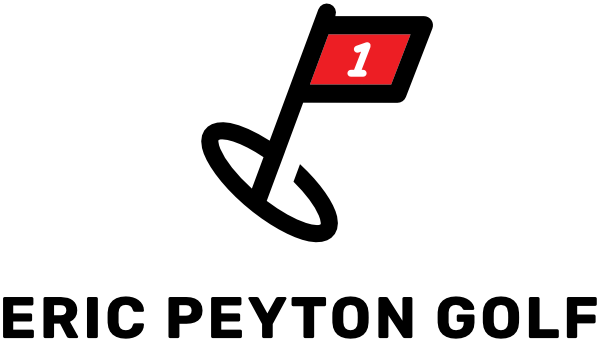Straighten Out Your Slice
A slice is, by far, the most common and frustrating mistake in the game of golf. Watching a ball slice away from the intended target is a helpless feeling, but there is hope.
A slice is when an airborne golf ball travels, exponentially farther, off the intended target line in the direction of the player’s front-side. So, for a right-handed player, a slice would be a shot that miss significantly right of the target, and vice versa for a left-handed player. It is, by far, the most common mistake in the game of golf.
It can also be very difficult to correct for several reasons. First, it can be the result of a lack of movement in a player’s hands through impact. It is much easier for a player to under-rotate their hands than to over-rotate. This under-rotation results in a slice. Second, correcting a slice is often counterintuitive. Our natural reaction to a sliced shot often makes the problem worse instead of better. Finally, there is no one answer to fixing all slices. It is often the result of one of three factors, or a combination of two or three factors.
Those three main factors are what we’ll discuss in this article; grip, path, and face.
Grip
Your grip is one of the most important parts of a golf swing because it is the only thing connecting you to the club. If you get the grip correct, you have a much better chance of hitting the ball on target. There are three types of grips; weak, standard, and strong. Now, even though they sound like it, these three grips have nothing to do with grip pressure. Instead, they refer to the placement of your hands on the club.
Typically, if you are slicing the ball, you’ll have a weak grip. A weak grip is one where the hands are too far on top of the club; they’re rotated towards the target. To correct this, find the “V’s” that are created by your thumbs and the base of your pointer-finger. These V’s ought to point, like arrows, towards your back shoulder (right shoulder for right-handed players). Rotating your grip in that direction will create a stronger grip and allow you to close down the clubface easier at impact.
Path
Path refers to the route a club head moves along. Imagine a young kid writing their name with a sparkler on the Fourth of July, the lines that are left by the light are the sparkler’s path. There are three possible paths; inside-out, outside-in, and straight (which actually travels inside-in due to the arc of a swing).
When a slice occurs, it’s often because your path is traveling outside-in and creating side-spin on the golf ball. This is where things get counterintuitive. Most people correct a slice by swinging more outside-in in hopes of pulling the ball in the opposite direction. The problem is, the more you do this, the more side-spin is created, leading to a more dramatic slice. To correct a slice, over exaggerate an inside-out path with a stronger grip.
Face
Face refers to the position of the golf club face at the moment of impact. There are also three possible face positions; open, square, and closed. A club’s face position is relative to the club’s path. Meaning, a square face position will always be perpendicular to the path.
As mentioned above, a slice is often the result of an outside-in path. It can also be the result of an open clubface, or both. The face position is closely tied to your grip. Starting with a stronger than normal grip will help your hands return to impact with a square or closed face that will stop your slice.
Also, often times golfers will address the ball with their club face in the "open" position without even realizing it. Make sure that the grooves on your club face run perpendicular to your target line. Try closing the toe of your club slightly before you swing and see how it influences your shot direction.
Final Thoughts
Again, a slice may be the result of one, two, or all three of these factors. One way to help diagnose a shot’s error is to remember that wherever the ball starts will indicate your face and where the ball finishes will indicate your path. So, if the ball starts on line, but slices, your face is probably square, but the path is outside to in. If the ball starts out right (for a right-handed player) and continues to slice, then your face is probably open and your path is outside to in. An open face and an outside to in path are the two moves that will result in a sliced shot.
A ball's flight will always obey the laws of physics. No matter where you shot goes, always remember that where the ball starts will indicate FACE and where it finishes will indicate PATH.



